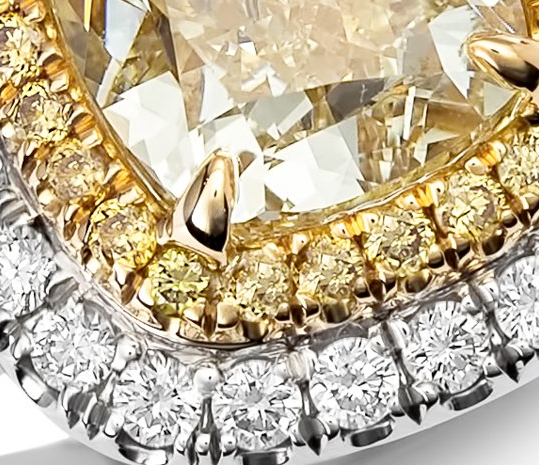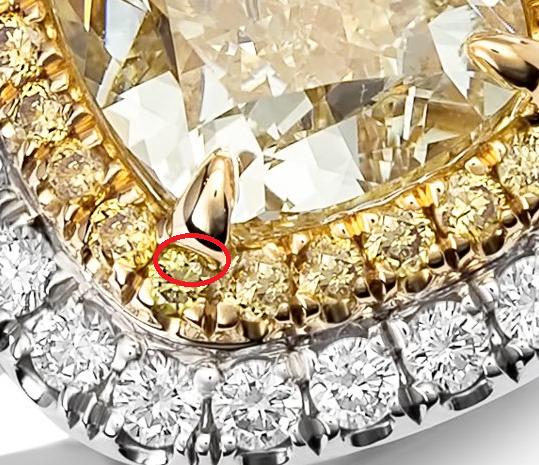You can use a setting bur for the melee. That’s how I do it, no ball or cylinder burs here. Just drill bits, cone burs and setting burs. I find it much more accurate to use setting burs for aligning and leveling the tables so that they are flat and square to each other.
With a ball bur cut seat, there is no real seat, just a diminishing diameter into which the girdle is wedged. When using a 90 degree setting bur, an actual seat with the same shape as the pavilion of the stone is cut into which the stone naturally finds its level. If the seats are all cut to the same depth and angle, assuming the stones are more or less identical, they will naturally seat to the same depth and angle. No amount of pushing or wiggling will change the depth or angle of the stone, which may or not be an advantage, depending on the care used to cut the seats and select the stones.
To the original question, yes, the seat for the center stone is cut into the prong when setting the stone, usually done as the last step after all the melee is set and the ring is more or less finished. That’s how I do it anyway. I use a hart bur to cut the seat.
As in setting the melee, the bottom of the seat is more important than the shape above the girdle. The trick is to cut each prong to exactly the same shape as the pavilion of the stone. Sometimes the stone isn’t exactly the same shape all around, so extra care is important here. I use a Sharpie to mark a spot on the stone so I can orient it the same as the process is repeated for each prong. This is called “indexing”.
The prongs should be cut to the same depth relative to the girdle height so the table of the stone ends up perfectly level with respect to the rest of the ring. Sometimes the girdle isn’t the same thickness all around or even parallel with the table and the seat must be cut a little lower in one place than another, so indexing is important for this too. The prongs should also be cut to exactly the same depth into the prong, I usually shoot for around a third to half the thickness of the prong. The center stone prongs should be identical when the piece is finished which is much easier to accomplish if they are all cut the same to begin with.
With stone setting, as with almost everything we do, each step builds on the accuracy of the previous steps. For example, the depth of the seat into the thickness of the prong is dependent on the spacing and angle of the prongs when they are initially installed, which is dependent on the inside size of the halo, which is dependent on the size of the melee, which is dependent on … On and on.
As to the prong’s positioning with the melee, you can see in your photo that the stone on the outside of the prong is slightly smaller than the surrounding melee. That allows room for the center stone prong while still allowing plenty of metal for setting the melee. That’s the way I usually do it too. Another method is to arrange the melee so that the prong falls between two melee, but that method has it’s own issues and I usually avoid doing that unless there is no other choice.
Just goes to prove that there are as many ways of doing things as there are people doing them. Ask five goldsmiths a question and you’re likely to get seven different answers.
The right way is the way that works for you.
Dave Phelps



 ) but is there any specific problem resulting from using a setting burr when doing that?
) but is there any specific problem resulting from using a setting burr when doing that?